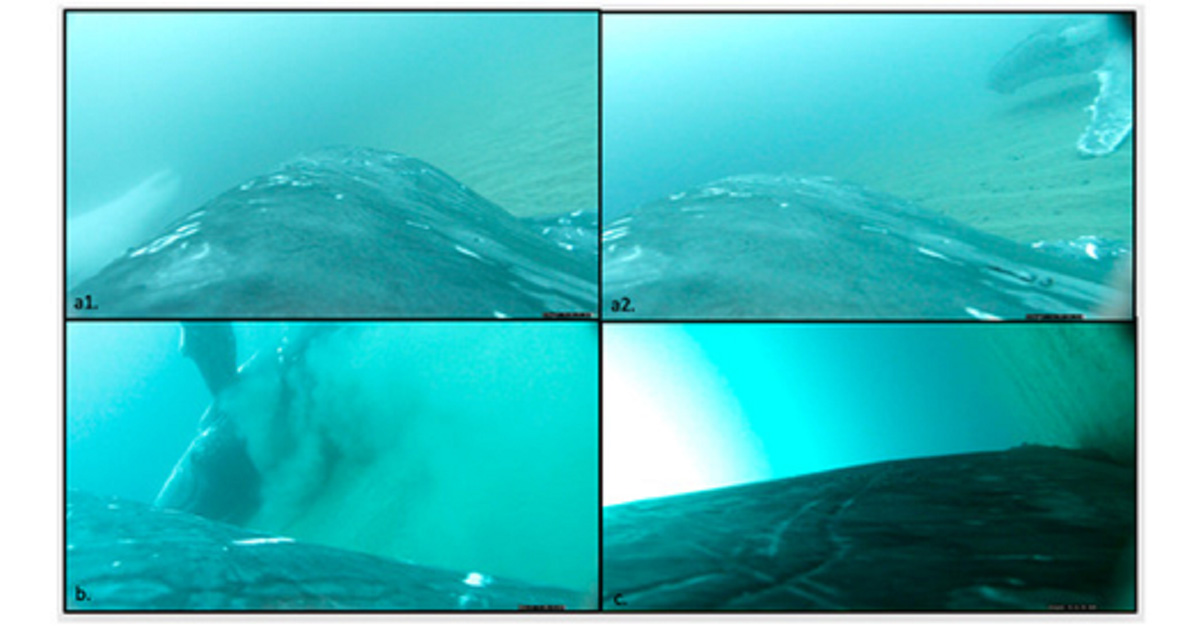A new Griffith University study has found that humpback whales will use sandy, shallow bay areas to 'roll' around in sandy substrates to remove dead skin cells on their return journeys south to cooler waters.
Marine ecologist Dr. Olaf Meynecke, from the Griffith-led Whales and Climate Research Program and Coastal and Marine Research Centre, used suction cup tags to track southward migrating whales between August 2021 and October 2022.
The CATS tags are fitted with integrated high-definition video, magnesium release system, a VHF transmitter for retrieval, magnetometers, a hydrophone and light, pressure, temperature, and GPS sensors.
Using data and footage collected from the tags, whales were observed performing full and side rolls in up to 49 m water depth on the sea floor that was lined with fine sand or rubble.
"On all occasions of sand rolling, the whales were observed on video to be slowly moving forward with their headfirst into the sand followed by rolling to one side or a full roll," Dr. Meynecke said.
"During the different deployments, the sand rolling was observed in the context of socializing. The behavior was either following courtship, competition, or other forms of socializing.
"So we believe that the whales exfoliate using the sand to assist with molting and removal of ectoparasites such as barnacle and specifically select areas suitable for this behavior."
In tropical and subtropical waters, barnacles attach to the whales in their early life stages, and whales need to remove barnacles frequently to avoid excessive growth that leads to drag and energy loss.
"Humpback whales host diverse communities of skin bacteria that can pose a threat for open wounds if bacteria grow in large numbers," Dr. Meynecke said.
 (Image credit: Griffith University)
(Image credit: Griffith University)
"Removing excess skin is likely a necessity to maintain a healthy bacterial skin community. Humpback whales can remove some barnacles and skin through surface activity such as breaches but not all."
Skin from the whales was observed to be falling off during the process of all identified rolls, and fish such as juvenile silver trevally were seen to be actively feeding from the whales' skin during this behavior similar to cleaning stations are coral reefs.
The research Exfoliating Whales-Sandy Bottom Contact Behavior of Humpback Whales has been published in Marine Science and Engineering.
This research was assisted by Sea World Research and Rescue Foundation and supported by funding to the Whales and Climate Research Program.
Journal Reference:
Jan-Olaf Meynecke, Johan Gustafon, David E. Cade. Exfoliating Whales–Sandy Bottom Contact Behaviour of Humpback Whales. Journal of Marine Science and Engineering, 2023; 11 (3): 600 DOI: 10.3390/jmse11030600



